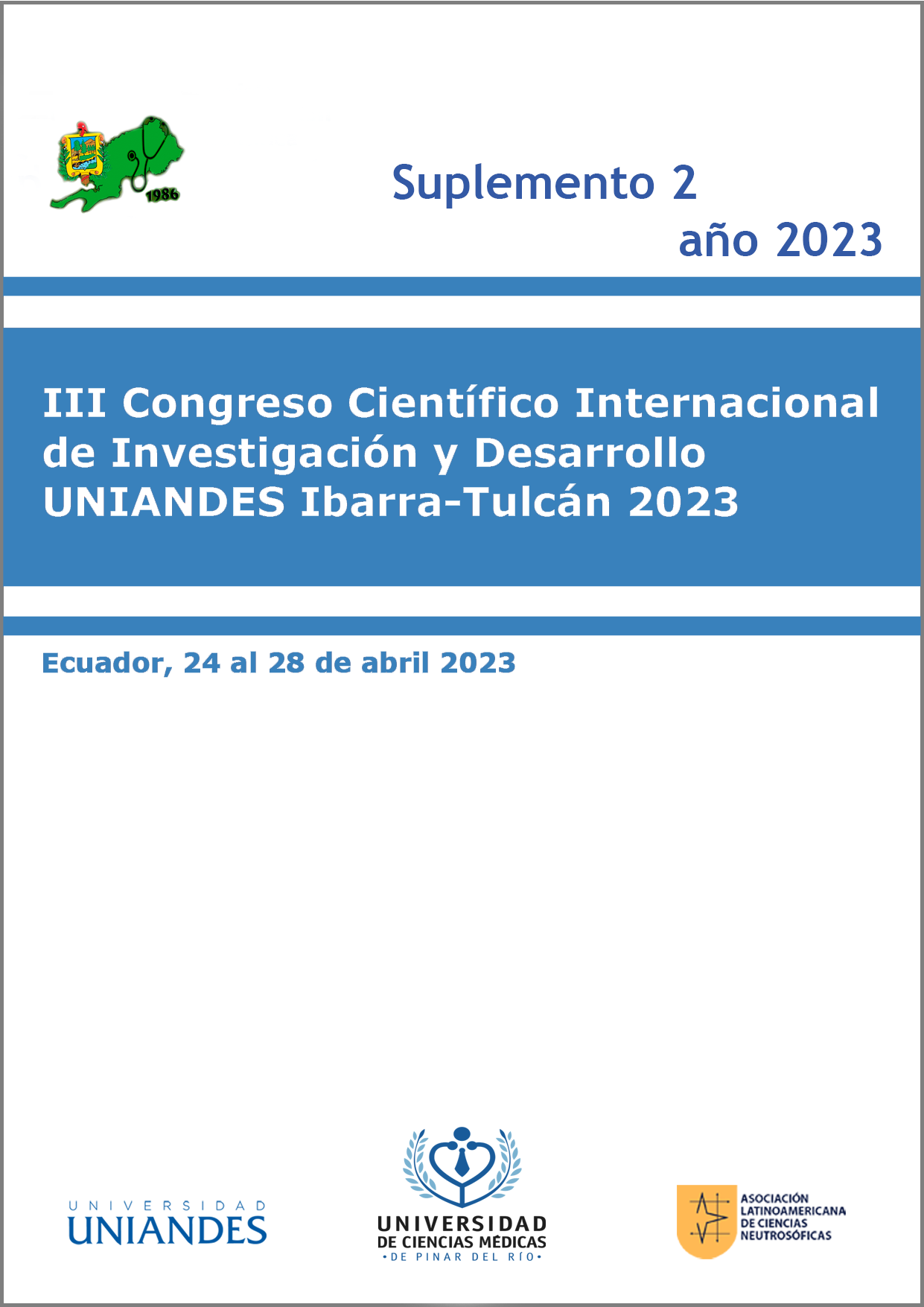Affections associated with the use of orthodontics in brass instrument players
Keywords:
ORTHODONTICS, INSTRUMENTS, LIP, MUSIC.Abstract
Introduction: the oral cavity and facial muscles are very important for wind instrumentalists, and these in turn exert strong pressure on the oral tissues during musical performance, exceeding the permissible forces.
Objective: to determine the implication of the use of orthodontic treatments in musicians who use brass instruments.
Methods: an observational, descriptive and transversal study was carried out in the period July-November 2023, at the Conservatorio Superior Nacional De Música de Ecuador. The universe was 60 students who practice with these instruments and the sample consisted of 22 people, obtained through simple random sampling and according to the established inclusion and exclusion criteria.
Results: 55 % of the sample considers that the use of orthodontic treatments affects the performance of their instrument. 77 % considered that they suffered damage when playing the instrument. This data, together with the answer to the previous question, gives us an important result, since in addition to the students who present severe dental occlusion, almost 10 % of the sample who present slight dental occlusion are also affected when playing their instrument.
Conclusions: the movement of a tooth when playing a musical instrument depends on the type of embouchure, the hours the instrument is played, the position of the teeth, the forces created by the tongue and the facial muscles during instrumental practice.
Downloads
References
1. Magalhães F. Influência dos instrumentos de sopro na cavidade oral. [Tesis] Brasil: Instituto de Ciencias de Salud. [Internet]; 2017 [citado 03/01/2023]. Disponible en: https://repositorio.uap.edu.pe/bitstream/handle/20.500.12990/4993/Tesis_Lesiones_Orales.pdf?sequence=1&isAllowed=y
2. Olufemi E, et al. Oral and dental problems among musicians: A cross-sectional study. J Inter Oral Health [Internet]. 2020 [citado 03/01/2023]; 12(4): 330 Disponible en:https://go.gale.com/ps/i.do?id=GALE%7CA634044850&sid=googleScholar&v=2.1&it=r&linkaccess=abs&issn=09767428&p=AONE&sw=w
3. De la Torre E, et al. Instrumentos de viento y asociativa con el sistema estomatognático. Odontología sanmarquina[Internet]. 2018 [citado 03/01/2023]; 21(4). Disponible en: https://doi.org/10.15381/os.v21i4.15559
4. Terán H, Castillo A. Efecto del empleo de Instrumentos de viento en las Maloclusiones Dentales. Revisión de la literatura. Acta Odontológica Venezolana [Internet]. 2013 [citado 03/01/2023]; 51(3). Disponible en: https://www.actaodontologica.com/ediciones/2013/3/art-17/
5. Laparra R. Influencia de la práctica instrumental en el sistema orofacial. España: Universidad de Valencia [Internet]; 2013 [citado 03/01/2023]. Disponible en: https://dialnet.unirioja.es/servlet/tesis?codigo=85806
6. Guzmán-Valderrábano CP, Durán-Gutiérrez A, Hernández-Carvallo JR, Guzmán-Valdivia I. Instrumentos musicales como factor etiológico de maloclusiones. Rev Mex Ortod[Internet]. 2018 [citado 03/01/2023]; 6(1): 35-44. Disponible en: https://www.medigraphic.com/cgi-bin/new/resumen.cgi?IDARTICULO=78265
7. Mendes C, Fernández R, Gamino A, Quevedo J, Doratti P, Barilaro L, et al. Músicos de viento: afecciones bucales asociadas a instrumentos musicales de viento. Facultad de Odontología de la Universidad Nacional de la Plata. [Internet]; 2017 [citado 03/01/2023]. Disponible en: http://sedici.unlp.edu.ar/handle/10915/65012
8. Rojas-Gómez AM, Lobo-Cortés LA, De la Hoz R, Linás-Ariza A. Lesiones estomatológicas para el uso de instrumentos de viento en sus ejecutantes. Ciencia y Salud Virtual [Internet]. 2017 [citado 03/01/2023]; 9(2): 67-77. Disponible en:
Downloads
Published
How to Cite
Issue
Section
License
Authors who have publications with this journal agree to the following terms: Authors will retain their copyrights and grant the journal the right of first publication of their work, which will be publication of their work, which will be simultaneously subject to the Creative Commons Attribution License (CC-BY-NC 4.0) that allows third parties to share the work as long as its author and first publication in this journal are indicated.
Authors may adopt other non-exclusive license agreements for distribution of the published version of the work (e.g.: deposit it in an institutional telematic archive or publish it in a volume). Likewise, and according to the recommendations of the Medical Sciences Editorial (ECIMED), authors must declare in each article their contribution according to the CRediT taxonomy (contributor roles). This taxonomy includes 14 roles, which can be used to represent the tasks typically performed by contributors in scientific academic production. It should be consulted in monograph) whenever initial publication in this journal is indicated. Authors are allowed and encouraged to disseminate their work through the Internet (e.g., in institutional telematic archives or on their web page) before and during the submission process, which may produce interesting exchanges and increase citations of the published work. (See The effect of open access). https://casrai.org/credit/



